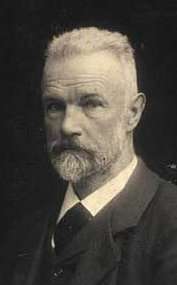Vilhelm Bissen
| Christian Gottlieb Vilhelm Bissen | |
|---|---|
 Portrait of Vilhelm Bissen by early Danish photographer Frederik Riise | |
| Born |
5 August 1836 Copenhagen, Denmark |
| Died |
20 April 1913 (aged 76) Copenhagen |
| Nationality | Danish |
| Education | Royal Danish Academy of Fine Arts |
| Known for | Sculptor |
| Movement |
Neoclassicism (early works) Naturalism (later works) |
Christian Gottlieb Vilhelm Bissen (5 August 1836 – 20 April 1913) was a Danish sculptor, son of Herman Wilhelm Bissen. He is mainly known for a number of statues around Copenhagen, including the equestrian statue of Absalon on Højbro Plads and the Stork Fountain on the adjoining Amagertorv. He was also a professor at the Royal Danish Academy of Fine Arts with great influence on the next generation of Danish sculptors and for a while served as its director.
Biography
Vilhelm Bissen was born in 1830 as the son of Herman Wilhelm Bissen, one of the leading Danish sculptors of his day. Young Bissen received training in his father's studio from an early age and studied at the Royal Danish Academy of Fine Arts from 1853 to 1857, then in Rome between 1857 and 1863 and finally in Carrara from 1866 to 1867 where he studied marble techniques.[1]
Upon his father's death in 1868, he returned to Denmark to continue his workshop and complete his ongoing projects. These included most notably the equestrian statue of King Frederik VII for the plaza in front of Christiansborg Palace (1873).[1]
His own works included a number of statues of prominent Danes for various locations around Copenhagen, including N. F. S. Grundtvig at the Marble Church, Christian IV at Nyboder and Queen Consort Caroline Amalie in Rosenborg Castle Garden. He was also commissioned to make two statues of Absalon at the septicentennial of his death in 1901, an equestrian statue for Højbro Plads and another statue for the facade of the new Copenhagen City Hall which was under construction at the time. He also produced a large number of animal sculptures of which the birds on the Stork Fountain on Amagertorv are the most famous.[1]
Style
Bissen was trained in the Neoclassical tradition from Bertel Thorvaldsen but after a stay in Paris around 1880, he was influenced by Naturalism. With the equestrian statue of Absalon he turned to Neo-romanticism.[1]
See also
| Wikimedia Commons has media related to Vilhelm Bissen. |
References
- 1 2 3 4 "Vilhelm Bissen". Gyldendal. Retrieved 2010-07-21.
| Cultural offices | ||
|---|---|---|
| Preceded by Ferdinand Meldahl |
Director of the Royal Danish Academy of Fine Arts 1902–1905 |
Succeeded by Otto Bache |
| Preceded by Otto Bache |
Director of the Royal Danish Academy of Fine Arts 1906–1908 |
Succeeded by Martin Nyrop |